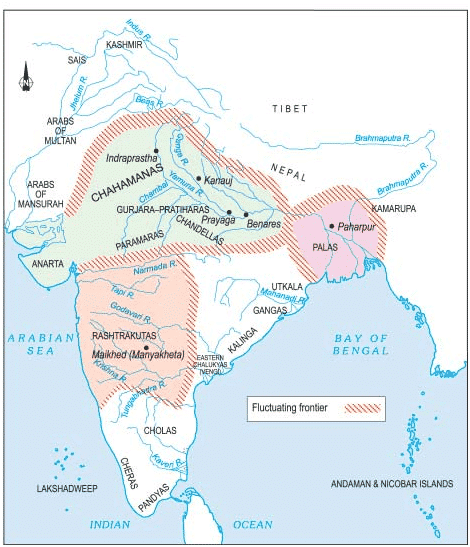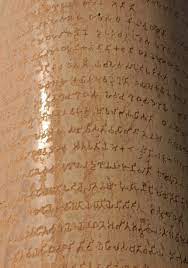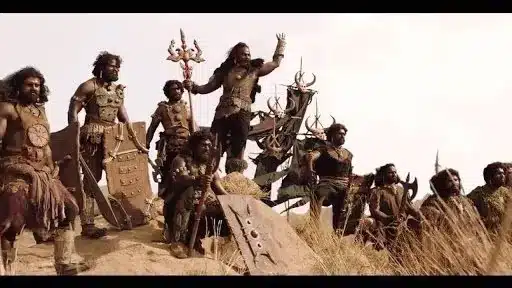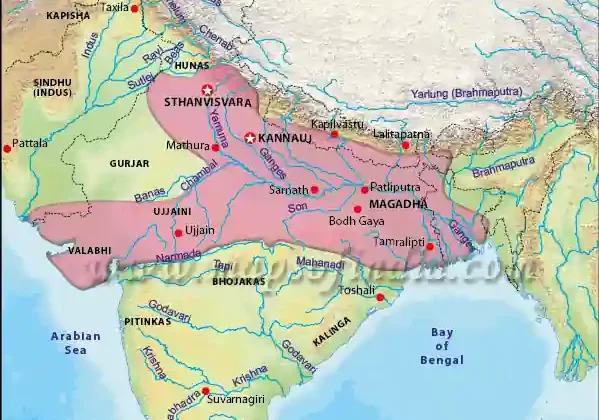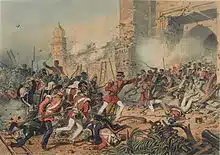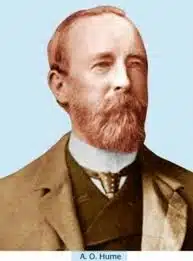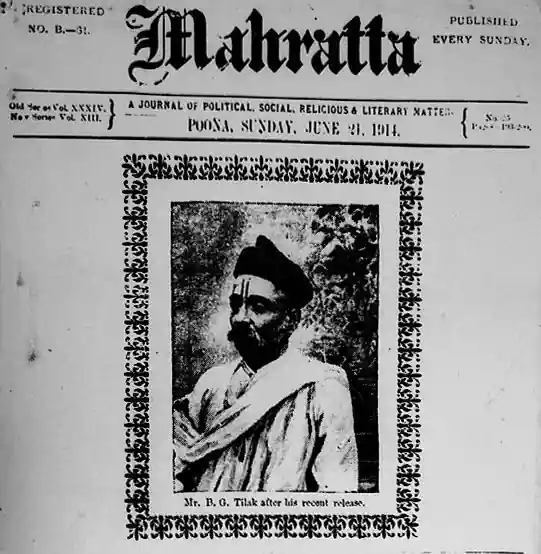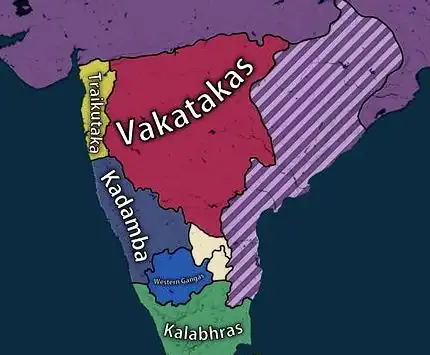About Chalukya Dynasty
The Chalukya dynasty was an Indian dynasty that played a significant role in the history of southern and central India between the sixth and twelfth centuries. It was known for its contributions to art, culture, and architecture, as well as its political influence in different periods.
The Chalukya dynasty can be broadly categorized into three major branches: the Badami Chalukyas, the Western Chalukyas, and the Eastern Chalukyas.
- The earliest dynasty, known as the Badami Chalukyas, ruled from their capital Badami from the middle of the sixth century. The Badami Chalukyas began to assert their independence at the decline of the Kadamba kingdom of Banavasi and rapidly rose to prominence during the reign of Pulakesin II.
- After the death of Pulakesin II, the Eastern Chalukyas became an independent kingdom in the eastern Deccan. They ruled from the capital Vengi until about the eleventh century.
- In the western Deccan, the rise of the Rashtrakutas in the middle of eighth century eclipsed the Chalukyas of Badami before being revived by their descendants, the Western Chalukyas in late tenth century. Those Western Chalukyas ruled from Basavakalyan till the end of the twelfth century.
While these three branches of the Chalukya dynasty had their unique characteristics, they all left a lasting legacy in the history of India, particularly in the Deccan plateau.
Significance of Chalukya Dynasty
- The rise of the Chalukyas marks an important milestone in the history of South India and a golden age in the history of Karnataka.
- The political atmosphere in South India shifted from smaller kingdoms to large empires with the rise of Badami Chalukyas.
- For the first time in history, a South Indian kingdom took control and consolidated the entire region between the Kaveri and the Narmada rivers.
- The rise of that empire also saw the birth of efficient administration, rise in overseas trade and commerce and the development of new style of architecture called Vesara.
- Around the ninth century, it also saw the growth of Kannada as a language of literature in the Jaina Puranas, Veerashaiva Vachanas and Brahmanical traditions.
- Further, the eleventh century saw the birth of Telugu literature under the patronage of the Eastern Chalukyas.
Sources of Chalukya Dynasty
Copper-plate records
It is deduced that the Chalukya dynasty started with a vassal of the Kadamba Kings. He probably declared himself an independent King when the Kadamba dynasty weakened. His successor was Ranaraga Jaysimha-I.
Inscriptions
Inscriptions constitute the main source of information about the Badami Chalukya history. Important among them are:
- the Badami cave inscriptions (578) of Mangalesa
- Kappe Arabhatta record of 700
- Peddavaduguru inscription of Pulakesi II
- the Kanchi Kailasanatha inscription and
- Pattadakal Virupaksha Temple inscriptions of Vikramaditya II
Literature
Hiuen-Tsiang, a Chinese traveller visited the court of Pulakesin II: At the time of that visit, as mentioned in the Aihole record, Pulakesin II had divided his empire into three Maharashtrakas or great provinces comprising of 99,000 villages each. That empire possibly covered present day Karnataka, Maharashtra and coastal Konkan.
Vidyapati Bilhana, the famous poet in the court of Vikramaditya VI of the Western Chalukya dynasty of Kalyana, mentions a legend in his work, Vikramankadeva Charita, which has been used to reconstruct History as well.
Chalukyas of Badami (6th to 8th centuries CE)
- Period: AD 543 – AD 755
- Capital: Badami (Vatapi)
- In the sixth century, with the decline of the Gupta dynasty and their immediate successors in northern India, major changes began to happen in the area south of the Vindyas— the Deccan and Tamilaham.
- Pulakesin I established the Chalukya dynasty in 550. He took Vatapi (Badami in Bagalkot district, Karnataka) under his control and made it his capital. They ruled over an empire that comprised the entire state of Karnataka and most of Andhra Pradesh in the Deccan.
- His son Kirtivarman-I ascended the throne and further expanded the Kingdom. He defeated the Mauryas of Konkan, Nalas and Kadambas.
- Further, Pulakesin II had been perhaps the greatest emperor of the Badami Chalukyas.
- Pulakesin-II consolidated his authority in Maharashtra and conquered large parts of Deccan. He defeated Harshavardhana and acquired the title of dakshinapatheshvara (lord of the south).
- Pulakesin II was defeated by Pallava king Narasimhavarman. It marked the beginning of a long-drawn political struggle between the Pallavas and Chalukyas that continued with ups and downs for over a hundred years.
- Later, the Badami Chalukya dynasty went into a brief decline following the death of Pulakesi II due to internal feuds.
- It recovered during the reign of Vikramaditya I, who succeeded in pushing the Pallavas out of Badami and restoring order to the empire.
- The empire reached a peak during the rule of the illustrious Vikramaditya II
- Eventually, the Rashtrakuta Dantidurga overthrew the last Badami Chalukya king Kirtivarman II, also known as Rahappa in 753.
Chalukyas of Badami – Rulers and their Contributions
Pulakesin I (540- 566 AD)
- Established city of Vatapi
- First sovereign ruler of the Chalukya dynasty.
- Titles: Vallabheshwar, Satyashraya, Rana-vikrama, Rajasimha etc.
- Religion: Performed Ashvamedha sacrifices, thus followed Vedic religion.
- Inscriptions: Badami rock inscription and Amminabhavi stone tablet inscription talks about Pulakesin I.
- Pulakesin I was followed by his son Kirtivarman I
Kirtivarman I (566-597 AD)
- Aihole Inscription: It states that Kirtivarman was “the night of doom” for the Nalas, Mauryas of Konkan and the Kadambas.
- Conquest of Konkan: Brought the vital port of Goa, or Revatidvipa, into the growing empire.
- Inscriptions: Godachi copper plate inscription talks about Kirtivarman I
Pulakesin II (608- 642 AD)
- The kingdom rapidly rose to prominence during his reign.
- Titles: Satyashraya, Bhattaraka, Parameshvara and Maharajadhiraja
- Pulakeshin’s subjugation of the Vishnukundins (allies of the Pallavas) brought him into conflict with the Pallavas.
- Battle of Pullalur, AD 618-19: He defeated and killed the Pallava king Mahendravarman-I.
- Aihole inscription: He defeated Harshavardhana in AD 630 and acquired the title ‘Dakshinapatheshvara’ (lord of the south).
- Hsuen Tsang calls Pulakeshin’s kingdom ‘Mo-ho-la-cha’, providing evidence of Pulakeshin’s success against Harsha.
- Battle of Vatapi, AD 642: He was defeated and killed by the Pallava king Narasimhavarman I.
- Ajanta Cave 1: A painting depicts the Sassanian ambassadors in his court. He maintained good relations with the Sassanian empire, which later led to the influx of Zoroastrians during the rise of Islam.
- Religion: Lohner and Pimpalner copper-plate inscriptions attest that he was a Vaishnavite.
- Religious tolerance: He was also tolerant of other faiths like Shaivism and Buddhism.
- Several of his inscriptions begin with salutations to Vishnu and bear seals with emblems that feature Varaha, an incarnation of Vishnu.
- The construction of the Shaivite shrines, now called the Upper Shivalaya, the Lower Shivalaya, and Malegitti Shivalaya, started during his reign.
- The Meguti Jain temple at Aihole was also built during his reign by Ravikirrti, who composed the Aihole inscription engraved on the wall of this temple.
- The Aihole prashasti inscription, composed by Pulakeshin’s court poet Ravikirtti, records the construction of a Jinendra temple by Ravikirtti and lists Pulakeshin’s military achievements.
Vikramaditya I (644-681AD)
After the death of Pulakesin II, he restored order in the fractured kingdom and made the Pallavas retreat from the capital Vatapi.
Chalukyan Art and Architecture
Temple Architecture
- Vesara Style: Mixture of Nagar and Dravida styles.
- This style originated and flourished at Aihole, Badami and Pattadakal.
- Important sites: Pattadakal, Aihole, Badami.
- Cave Temples: Found in Ajanta, Ellora and Nasik.
- They are monolithic and excavated in sloppy hills.
- They are Brahmanical dedication and Buddhist in style and technique.
- In Aihole, the Durga temple (sixth century), Ladh Khan temple (450), Meguti temple (634), Hucchimalli and Huccappayya temples (fifth century), Badami Cave Temples (600) provide examples of early Chalukyan art.
- The rock-cut temples of Pattadakal, a UNESCO World Heritage Site, Badami and Aihole constitute their most celebrated monuments. This marks the beginning of Chalukya style of architecture and a consolidation of South Indian style.
Pattadakal (Raktapura) Group of Monuments (West Bank of Malprabha River)
- Pattadakal: Ten temples built in the seventh and eighth centuries, generally dedicated to Shiva, the most celebrated of which are the Papanatha temple (AD 680) and the Virupaksha temple.
- Elements of Vaishnavism and Shaktism theology and legends are also featured.
- Style: Fusion of two major Indian architectural styles, one from north India (Rekha-Nagara-Prasada) and the other from south India (Dravida-Vimana).
- The Ten Temples: Kadasiddheshwar Temple, Jambu Lingeshwara Temple, Galaganatha Temple, Chandrashekhara Temple, Sangameshwara Temple, Kashi Vishwanath Temple, Mallikarjuna Temple, Virupaksha Temple, Papanath Temple and Jain Narayana Temple.
- Papanath Temple: Has a low and stunted tower in the northern style.
- The site, states Archaeological Survey of India, is mentioned in texts by Srivijaya and is referred to by Ptolemy as “Petirgal” in his Geography.
- UNESCO description: Pattadakal as “a harmonious blend of architectural forms from northern and southern India”.
- Stones used: Structures were built using the sandstones found abundantly locally at Pattadakkal. Some of the sculptures are carved from polished black granite.
Badami Temples
- Complex of Hindu and Jain cave temples.
- Caves 1-4:
- Sandstone Formation.
- Cave 1: Tandava-dancing Shiva as Nataraja
- Bhutanatha group of temples:
- Along Agasthya Lake.
- came under the influence of Jains for a while. Later, it was taken over by the Lingayats, who installed a Shiva Linga in the shrine and a Nandi in front.
- Style: Blend of North Indian and early South Indian temple architecture.
- The Mallikarjuna Temple:
- Lies northeast of the lake and belongs to the period of the later Chalukyas, the Chalukyas of Kalyani.
- It has the tiered pyramid structure characteristic of Western Chalukya Architecture.
- Shikhara: Dravidian type.
- All the Early Chalukyan cavesand temples in Badami, except Upper Shivalaya, are nirandhara structures.
Virupaksha Temple
- Largest of the Pattadakal Monuments.
- Built-in 740 AD by Queen Lokamahadevi to commemorate her husband’s victory over the kings from the South.
- Style: Purely Southern style.
- Has a very high square and storeyed tower (shikhara).
- Temple walls represent scenes from the Ramayana.
- It is also known as “Sri Lokeshwara Mahashila Prasada”, honouring queen Lokamahadevi who commissioned the temple.
- Facing east, this temple has on plan a square sanctum (garbhagriha) with a circumambulatory path (pradakshina patha), an antarala with two small shrines for Ganesa and Mahishamardini facing each other in front.
- The Tower: Above the sanctum is a three-storey pyramidal structure, with each storey bearing motifs that reflect those in the sanctum below.
- The Nandi-Mandapa, situated east of the temple, is a square pavilion open on all four sides. It houses a large image of Nandi on a raised floor.
- Carvings on Sanctum Walls: Depict images of Shaivism, Vaishnavism, and Shaktism deities.
- Themes such as Narasimha and Varaha (Vaishnavism), Bhairava and Nataraja (Shaivism), and Harihara (half Shiva-half Vishnu).
Aihole Group of Temples
- Mainly flourished from the reign of Pulakesin I to Pulakesin II.
- There are several groups of temples and two cave shrines dotting the landscape.
- Ravanphadi cave:
- Consists of a mandapa, garbhagriha and two side galleries flanking Mandapa.
- A 6th-century artwork showing dancing Shiva (Nataraja) with Parvati, Saptamatrikas or seven mothers of Shaktism tradition, Ganesha and Kartikeya.
- Two layouts: Sandhara (with circumambulatory path) and Nirandhara (without circumambulatory path).
- Several superstructures:
- Shikhara: Tapering superstructure of discrete squares.
- Mundamala: Temple without superstructure, literally, garland with a shaved head.
- Rekha-Prasada: Smooth curvilinear superstructure also based on squares prevalent in northern and central India.
- Dravidian Vimana: Pyramidal style of southern India) and,
- Kadamba-Chalukya Shikhara: A Fusion style.
- Guadar Gudi
- Garbhagrihais centrally located.
- Sandhara structure.
- Has mundamala shikhara.
- Temples like Huchhimalli gudi and Huchhapayya gudi signify development in the Rekha-prasada type of shikhara.
- Durga temple: a rare example of an apsidal plan in early Chalukyan temples. It has a Sandhara plan.
- Aihole is the ‘cradle of Indian temple architecture’.
- Most temples are Brahmanical, but there are a few Jain temples also.
- Blocks of stone were used for vertical construction.
- Unique Shikharas: The curvilinear and pyramid-like shikhara developed here, not developed in the south.
- One Buddhist monument in Aihole, on Meguti Hill.
- Jain Monuments: Aihole preserves four collections of about ten Jain monuments from the 6th to 12th century AD, associated with the Meena Basti.
- These are found on the Meguti hill, Chanranthi matha, Yoginarayana complex and an early Jaina cave temple.
Ladkhan Temple
- Also known as Chalukya Shiva Temple.
- Originally dedicated to Vishnu.
- Style: The temple was built in a Panchayatana style (central shrine surrounded by four other shrines).
- Special Feature: It starts with a rectangular structure and ends with a square structure.
Paintings
- Paintings are found in a cave temple dedicated to Vishnu in Badami.
- Chalukyas adopted the Vakataka style in painting.
- Many of the paintings are of incarnations of Vishnu.
- The most popular Chalukya painting is in the palace built by King Mangalesan (597-609).
- It is a scene of the ball being watched by members of the royal family and others.
Administration under Chalukyas of Badami
- Paternalistic Control: Chalukyas of Badami exercised Paternalistic control over the village administration, which was unlike the administrative practice of South India.
- King: Actively involved in the administration. King was the head of administration and highest judicial authority. Most of the Chalukyan kings worked for the welfare of the people.
- Council of Ministers: There was a council of ministers to advise the king and to help him in administration.
- Mahamatya: The Prime Minister was called Mahamatya:
- Division of Kingdom: The kingdom was divided into Maharashtrakas (provinces), then into smaller Rashtrakas (Mandala), Vishaya (district), Bhoga (group of ten villages).
- Village autonomy: Absent under the Chalukya, unlike Pallavas and Cholas
- Maritime Power: Chalukyas were great Maritime power; Pulakeshin II had 100 ships under his control and a small standing army.
- Groups of mahajanas (learned brahmins), looked after agraharas (like Ghatika or place of higher learning) like the ones at Badami (2000 mahajans) and Aihole (500 mahajanas).
Society and Religion under Chalukyas of Badami
- The period was an era of the revival of Hindu culture and spirituality.
- Importance was given to Vedic rites and rituals.
- Sati may have been absent as widows like Vinayavathi and Vijayanka are mentioned in records.
- Devadasis’ appeared in temples.
- The Hindu caste system appeared.
- Women were respected in society. Women enjoyed political power in administration.
- Sage Bharata’s Natyashastra the precursor to Bharatanatyam, the dance of South India had been popular as seen in many sculptures and mentioned in inscriptions.
- The rule of the Badami Chalukya proved a period of religious harmony.
- They initially followed Vedic Hinduism, as seen in the various temples dedicated to many popular Hindu deities with Aihole.
- Later, from the time of Vikramaditya I, the people took an inclination towards Shaivism and sects like Pashupata, Kapalikas and Kalamukhas existed.
- The Vaishnavism, Shaivism, Shakta cults and Jainism had received generous encouragement from the kings.
- Hsuen Tsang: Mentioned the decline of Buddhism in western Deccan. But Jainism was steadily on the path of Progress. Ravikirti, the court poet of Pulakesin II, was a Jain.
Economy under Chalukyas of Badami
- Income from Land: The state income from land seems very limited since most of the land was rocky and not fertile.
- Trade and Commerce: The earnings from the trading activities were also not considered since trade and commerce in India during this period was generally declining.
- Plundering: Chalukyas resorted to frequent invasions and plunder of the neighbouring territories due to the poor state of the economy. The mutually destructive Chalukya-Pallava conflict can be properly understood only in this background.
Coinage
- The Badami Chalukyas minted coins of a different standard compared to the northern kingdoms.
- The coins had Nagari and Kannada
- They minted coins with symbols of temples, lion or boar facing right, and the lotus. The coins weighed four grams, called honnu in old Kannada and had fractions such as fana and the quarter fana, whose modern day equivalent being hana (literally means, money)
Literature
- Language: Sanskrit, Kannada, Prakrit.
- The rule of the Chalukyas embodies a major event in the history of Kannada and Telugu languages.
- During the ninth – tenth century, Kannada language had already seen some of its greatest writers. The three gems of Kannada literature, Adikavi Pampa, Sri Ponna and Ranna belonged to that period
- In the eleventh century, the patronage of the Eastern Chalukyas, with Nannaya Bhatta as its first writer gave birth to Telugu literature.
- Famous writers in Sanskrit from that period include Vijnaneshwara who achieved fame by writing Mitakshara a book on Hindu law.
- Somesvara III became a great scholar and king, compiling an encyclopedia of all arts and sciences called
- From the period of the Badami Chalukya no major Kannada literary work has been recovered, though many works have been referenced in later centuries.
- Aihole Inscriptions (by Ravikirti): Sanskrit inscription at Meguti Jain temple in Aihole. Chalukyas used Sanskrit in pillar inscriptions such as Aihole and Mahakudam.
- Badami Inscription: It mentions Kannada as the local Prakrit, meaning the people’s language, and Sanskrit as the language of culture.
- During this period, the ‘Tripadi’ form of poetry existed: The extant Kappe Arabhatta record of 700 in tripadi (three line) metre represents the earliest work in Kannada poetics.
- The literary work Karnateshwara Katha, quoted later by Jayakirti, belonged to the period of Pulakesi II with the great king himself as the hero.
- Saptavataram: A grammar work authored by the chieftain of Pulakesin II in Sanskrit.
- Kaumudi Mahotsav: It was written by Pulakeshi II’s daughter-in-law, Vijjika, a poetess.
- Other Kannada writers of that time included Syamakundacharya of 650 who wrote Prabhrita, the celebrated Srivaradhadeva also called Tumubuluracharya of 650 (who wrote Chudamani, a commentary on Tattvartha-mahashastra in 96,000 verses).
Decline of Chalukyas of Badami
- After the death of Pulakesin II, Badami Chalukyas went into a brief decline due to internal feuds.
- Continued friction withPallavas and their occupation of Badami for thirteen years made Chalukyas weak.
- The Chalukyas were in continuous wars with Rashtrakutas in later times.
- The Rashtrakutas replaced the Chalukyan rule in Badami in about 750 CE when Rashtrakuta feudatory Dantidurga gave a final blow and defeated the Chalukyan king Kirtivarman II.
Chalukyas of Kalyani
The Chalukyas revived their fortunes in 973 C.E., after over 200 years of dormancy when the Rashtrakutas dominated much of the Deccan.
The Western Chalukyas, also known as the Kalyani Chalukyas/Kalyana Chalukyas, had their capital in Kalyani (modern-day Basavakalyan in Karnataka). They claimed descent from the ancient Chalukyas of Badami, who had ruled the region centuries earlier.
They emerged as a powerful dynasty in the Deccan region during the 10th century. The dynasty reached its zenith under King Vikramaditya VI (r. 1076-1126 CE).
- The reign of the Kalyani Chalukyas had been a golden age in Kannada literature.
- Tailapa II, a Rashtrakuta feudatory ruling from Tardavadi-1000 (Bijapur district) overthrew Karka II and re-established the Chalukyan kingdom and recovered most of the Chalukya empire.
- This dynasty came to be known as the Western Chalukya dynasty or Later Chalukya dynasty.
- Scholars widely considered Vikramaditya VI the greatest ruler of the dynasty; his 50 year reign called Chalukya Vikrama Era.
- Later, the Western Chalukyas went into their final dissolution 1180 with the rise of the Hoysalas, Kakatiya and Seuna.
- The Kalyani Chalukyas further refined the Vesara style with an inclination towards Dravidian concepts, especially in the sculptures. They built fine monuments in the Tungabhadra – Krishna river doab in present day Karnataka.
Rulers Chalukyas of Kalyani
- Tailapa II (973-997 CE): Tailapa II is considered one of the founders of the Western Chalukya dynasty. He expanded the Chalukya territory and was known for his successful military campaigns.
- Satyashraya (997-1008 CE): Satyashraya succeeded Tailapa II as the ruler of the Western Chalukyas. His reign was marked by efforts to consolidate Chalukya’s power and establish control over the region.
- Vikramaditya VI (1076-1126 CE): Vikramaditya VI is one of the most famous Chalukya rulers. His reign saw the height of Chalukya’s power and influence. He was a patron of arts and culture and is known for his inscription at the Kailasanatha temple in Ellora.
- Someshvara I (1042-1068 CE): Someshvara I was another important ruler of the Kalyani Chalukya dynasty. He made significant contributions to the arts and literature of the time.
- Someshvara II (1068-1076 CE): Someshvara II succeeded Someshvara I and continued his legacy. He is known for his patronage of Jainism and the construction of Jain temples.
- Vikramaditya VII (1136-1156 CE): Vikramaditya VII was a later ruler who tried to revive Chalukya’s power, but by this time, the dynasty was facing decline.
Architecture of Chalukyas of Kalyani
The Western Chalukyas are known for their contributions to art and literature, particularly the Sanskrit poet Bilhana and their Chalukyan style of temple architecture.
Their style of temple architecture is often referred to as “Vesara,” characterized by a combination of both Nagara (North Indian) and Dravidian (South Indian) architectural elements. This style resulted in unique and distinctive temple designs.
- They were notable for their temple architecture, characterized by intricately carved stone temples with unique features.
- The Lad Khan Temple, the Durga Temple at Aihole, and the Mahadeva Temple at Itagi are notable examples of Chalukyan architecture.
The Western Chalukya dynasty began to decline in the 12th century due to external invasions, particularly by the Cholas and the Kalachuris. Additionally, the rise of the Hoysala dynasty and other regional powers contributed to their decline.
- Despite their eventual decline, the Western Chalukyas left a lasting legacy in the Deccan region.
- Their architectural contributions, especially the Chalukyan style of temple architecture, continue to be admired and studied by historians and art enthusiasts.
- The dynasty effectively came to an end in the late 12th century when the Kalachuris of Kalyani defeated and absorbed the Western Chalukya kingdom.
Eastern Chalukyas (7th to 12th Centuries CE)
The Eastern Chalukyas, also known as the Chalukyas of Vengi, ruled in the eastern Deccan region, primarily in present-day Andhra Pradesh and Telangana. They branched out of Badami chalukyas.
They ruled over the eastern Deccan region of India, with their capital initially in Vengi (modern-day Pedakallepalli in Andhra Pradesh) and later in Rajamahendravaram (modern-day Rajahmundry).
Rulers
- Kubja Vishnuvardhana (624 – 641 CE): Kubja Vishnuvardhana is considered the founder of the Chalukya dynasty in Vengi. He established the dynasty and laid the foundation for its rule in the region. He was the brother of Pulakeshin II and possibly became independent after the latter’s death.
- Jayasimha I (641 – 673 CE): Jayasimha I succeeded his father Kubja Vishnuvardhana and continued to consolidate and expand the Chalukya rule in Vengi.
- Mangi Yuvaraja (673 – 682 CE): Mangi Yuvaraja was a Chalukya ruler who followed Jayasimha I. His rule marked a period of relative stability and consolidation.
- Vishnuvardhana II (706 – 746 CE): Vishnuvardhana II continued the expansion of the Chalukya kingdom. He played a significant role in the political developments of the region.
- Vijayaditya I (746 – 756 CE): Vijayaditya I was known for his contributions to art and culture. He was a patron of the famous Telugu poet Nannaya Bhatta, who wrote the Mahabharata in Telugu.
- Vishnuvardhana III (770 – 821 CE): Vishnuvardhana III was another important ruler who patronized art and literature. His rule saw the continuation of cultural developments in the Vengi region.
- Vijayaditya II (808 – 847 CE): Vijayaditya II was a Chalukya ruler who ruled during a period of political turmoil. His reign witnessed conflicts with the Rashtrakutas.
- Amma I (847 – 869 CE): Amma I was one of the last rulers of the Chalukyas of Vengi. His reign marked the declining phase of the dynasty, as the region faced invasions and conflicts.
The dynasty had a complex history, often subject to conflicts with neighboring dynasties like the Cholas and the Chalukyas of Kalyani.
The Eastern Chalukyas administration as mentioned in inscriptions refers to the traditional seven components of the state (Saptanga), and the eighteen Tirthas (Offices), such as:
- Mantri (Minister)
- Purohita (Chaplain)
- Senapati (Commander)
- Yuvaraja (Heir-apparent)
- Dauvarika (Door keeper)
- Pradhana (Chief)
- Adhyaksha (Head of the department) and so on.
Architecture of Eastern Chalukya
They were responsible for the construction of various temples in their region, incorporating Dravidian architectural elements.
- Dravidian Temple Architecture: The Chalukyas of Vengi were patrons of Dravidian-style temple architecture, which is characterized by its distinctive pyramid-shaped towers or vimanas. These temples typically had square or rectangular sanctum sanctorum (garbhagriha) and a hall (mandapa) supported by intricately carved pillars.
- Lingaraja Temple: The Lingaraja Temple in Rajamahendravaram (formerly known as Draksharama) is one of the most significant examples of Chalukya architecture. This temple is dedicated to Lord Shiva and showcases the typical Dravidian architectural elements, including a towering vimana and richly carved stone sculptures.
- Bhimesvara Temple: Another notable temple constructed by the Chalukyas of Vengi is the Bhimesvara Temple in Samalkot. This temple is renowned for its intricate carvings on the exterior walls, depicting various deities, mythological scenes, and intricate ornamentation.
- Kumararama Bhimeswara Temple: Located in Samarlakota, this temple is one of the five Pancharama Kshetras dedicated to Lord Shiva. It features a Dravidian-style vimana with detailed carvings and sculptures.
- Jagannath Temple: The Chalukyas of Vengi also contributed to the construction of the Jagannath Temple in Puri, Odisha. Although this temple primarily follows the Kalinga style of architecture, it received patronage and support from various dynasties, including the Chalukyas of Vengi.
- Influence of Chola Architecture: The Chalukyan architects in the Vengi region were influenced by the Chola dynasty, which was known for its architectural grandeur. As a result, some elements of Chola architecture, such as large and intricately carved gopurams (entrance towers) and temple tanks, were incorporated into Chalukyan temples.
- Niche Sculptures: Chalukya temples are often adorned with niche sculptures of deities, celestial beings, and mythological figures. These sculptures showcase the artistic prowess of the era and the religious devotion of the rulers.
- Ornate Pillars: Pillars inside the temple halls (mandapas) are adorned with intricate carvings, including depictions of divine beings, dancers, musicians, and floral motifs.
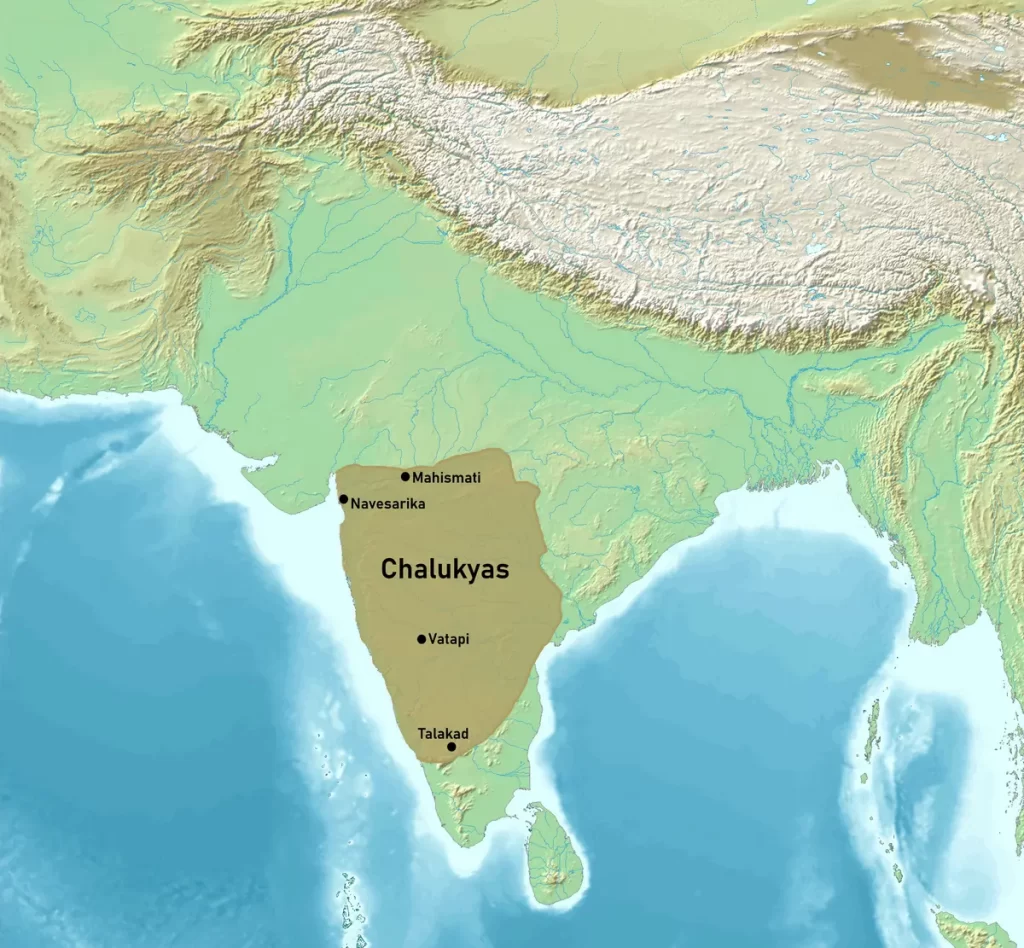
Conclusion
The Chalukyas of Badami not only left an indelible mark on the political history of the Deccan but also fostered remarkable cultural and artistic achievements. The rule of Badami Chalukyas witnessed the rise of the Vesara style of temple architecture, with enduring masterpieces such as the temples of Aihole, Badami, and Pattadakal. The Chalukyas of Badami also maintained diplomatic relations and trade networks, strengthening the region’s economy and cultural influence. Their legacy, particularly in art, architecture, and governance, laid the foundation for future dynasties, leaving a lasting imprint on Indian history.
- Thus, the Chalukya era may be seen as the beginning in the fusion of cultures of northern and southern India making way for the transmission of ideas between the two regions.
- This becomes clear from an architectural point of view as the Chalukyas spawned the Vesara style of architecture including elements of the northern nagara and southern dravida styles.
- The expanding Sanskritic culture mingled in a region where local Dravidian vernaculars had already become popular.
- During the Chalukya rule, the Bhakti movement gained momentum in south India in the form of Ramanujacharya and Basavanna later spreading to north India.

